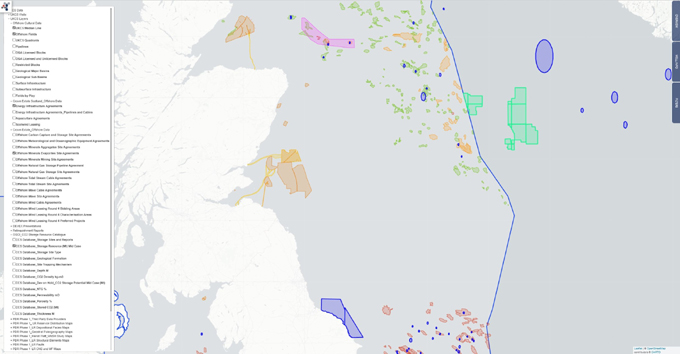At Aeon we have been thinking about data. Actually, we are always thinking about data; how to find it, how to access it, the applications of data, the best way to visualise it, who is using the data. But more specifically, we have been thinking about the value of open/public subsurface data and how companies and individuals believe (or not) in the value of these data, and therefore choose to implement them (or not) in their business practices.
The Public Data Repository (PDR) platform has been developed upon the availability of high quality, freely available subsurface data and using our software we want users to unlock the potential of these datasets. We have gathered data from the OGA, The Crown Estate and Crown Estate Scotland, OGCI, the NPD, industry conferences, academia and private companies (more on that in a bit!), and surely the combined efforts from these disparate sources is a valuable resource? If we step back to consider the weeks & months of technical work to produce these geoscience datasets and the years of experience and expertise of those executing the work, then it seems a reasonable assumption to suggest that these datasets can be of great value to companies and individuals going forward.

To take a couple of examples from the list of sources above, we can explore this further. The OGA has released an exceptional breadth of UKCS subsurface data into the public domain and is rightly seen as a world leading authority in the provision of accessible geoscience data. Reviewing the list of consultancy or service companies whom the OGA has engaged to deliver the various geoscience studies/datasets, you find industry leaders; CGG, Applied Petroleum Technology (APT), Getech, Integrated Geochemical Interpretation (IGI), Chemostrat, to name but a few. These companies have excellent reputations, staff that are experts in their fields and are sought by oil & gas companies to complete value-adding “in-house” studies… And yet you can access the fruits of their efforts – for free!
Similarly, the Oil and Gas Climate Initiative (OGCI) is driven by industry leaders and commissioned the CO2 storage resource catalogue - the first independent evaluation of geological CO2 storage assessments, which aims to provide insight into global CCS opportunities. With support from the Global CCS Institute, the catalogue (including technical assessment, database population and reporting) was delivered by Pale Blue Dot/Storegga. Again this demonstrates the critical role of industry leaders in delivering high quality public data, with Storegga being at the forefront of CCS activities in the UK and lead developer of the Acorn project.
We also mentioned private companies earlier with regards to datasets on the PDR. To be more precise, we have a number of “third party data providers” (generally consultancies) on the platform who are promoting their own subsurface products which can be purchased. And whilst these companies vary in their discipline, the common theme between them? They have taken public domain data, applied their expertise to generate something new and valuable, and are now selling those products. They have recognised the opportunity in public domain data and proactively applied it to their business activities.
Now, while these arguments may compel you to cancel your pending meeting and sign up to the PDR (FYI, it’s also free: Public Data Repository | Aeon Geoscience (aeon-gs.com) ) we have to be realistic and consider why some companies may not recognise the true value of open data. In larger companies, where subsurface databases have been gathered over many years and include data acquisition of the highest quality, its not unreasonable to think individuals or teams simply believe their in-house sources are more comprehensive and better suited. And related to this is also the time it takes to compile public data from multiple sources – companies with large, corporate databases may not be willing to spend their resources on mining for data which may or may not positively impact what they already have.
Another potential factor is perception. The perception that the public data may be of lesser quality than internal sources and therefore not valuable. Individuals or companies may also think along the lines of “its free data, I will get onto it at some point” or “that looks interesting, I will take a look when I am working on that area”… But then it falls down the priority list. Is there a greater imperative to use data which have been purchased and thus must justify a ROI ? Predictably so, but arguably the optimal approach is to use all and any relevant data that is at your disposal.
So, open data; playing second fiddle or joining centre stage? We certainly don’t think it’s playing second fiddle and we truly believe there is much to be gained from its application. The breadth and quality of the subsurface data available in the UK (and beyond!) offers real opportunities to various disciplines and industries. Furthermore, we actually believe the value of public domain data is amplified when it is integrated and the incremental benefits are realised.
 KEYFACT Energy
KEYFACT Energy